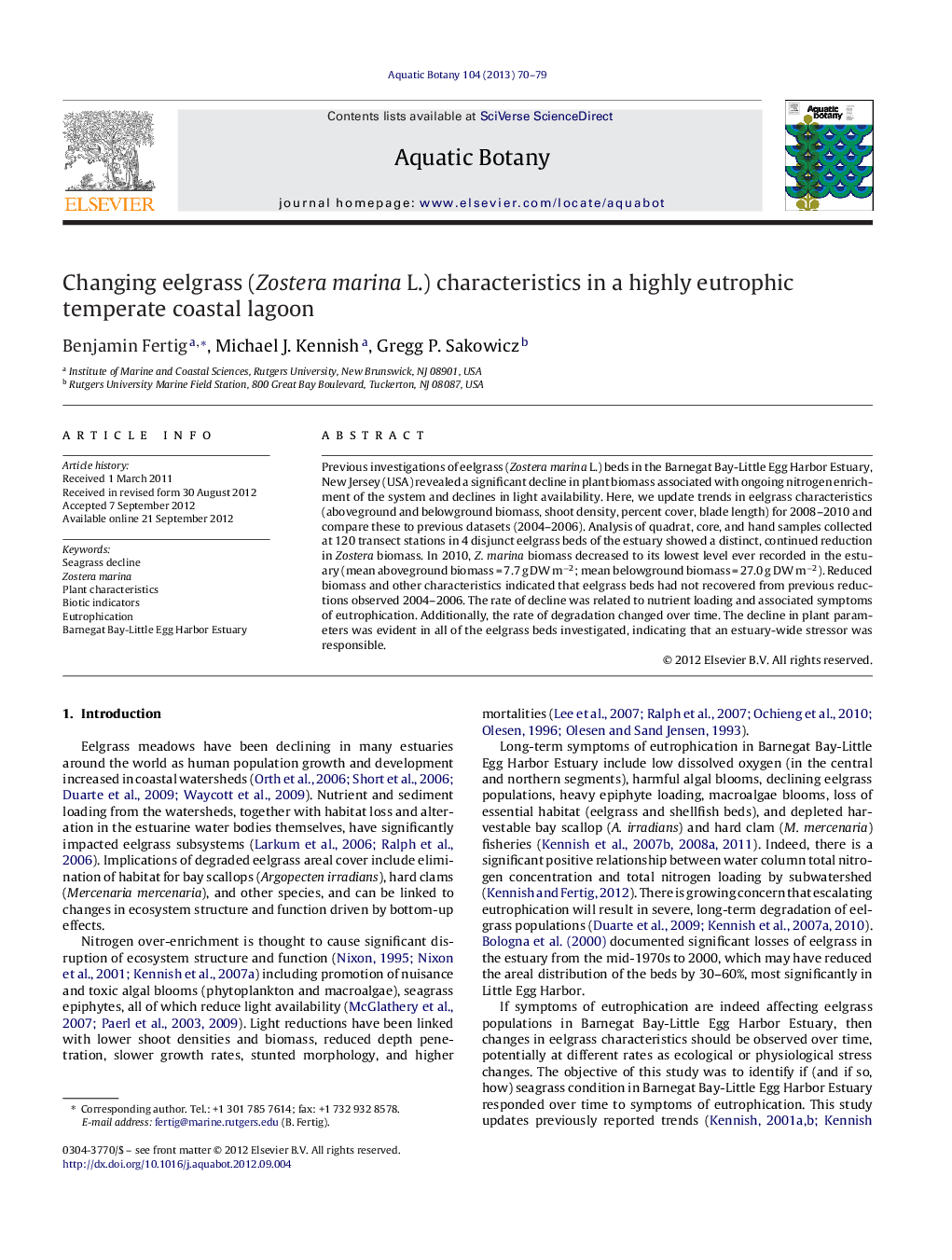| Article ID | Journal | Published Year | Pages | File Type |
|---|---|---|---|---|
| 4527968 | Aquatic Botany | 2013 | 10 Pages |
Previous investigations of eelgrass (Zostera marina L.) beds in the Barnegat Bay-Little Egg Harbor Estuary, New Jersey (USA) revealed a significant decline in plant biomass associated with ongoing nitrogen enrichment of the system and declines in light availability. Here, we update trends in eelgrass characteristics (aboveground and belowground biomass, shoot density, percent cover, blade length) for 2008–2010 and compare these to previous datasets (2004–2006). Analysis of quadrat, core, and hand samples collected at 120 transect stations in 4 disjunct eelgrass beds of the estuary showed a distinct, continued reduction in Zostera biomass. In 2010, Z. marina biomass decreased to its lowest level ever recorded in the estuary (mean aboveground biomass = 7.7 g DW m−2; mean belowground biomass = 27.0 g DW m−2). Reduced biomass and other characteristics indicated that eelgrass beds had not recovered from previous reductions observed 2004–2006. The rate of decline was related to nutrient loading and associated symptoms of eutrophication. Additionally, the rate of degradation changed over time. The decline in plant parameters was evident in all of the eelgrass beds investigated, indicating that an estuary-wide stressor was responsible.
► We examined Zostera marina characteristics in Barnegat Bay-Little Egg Harbor. ► The rate of Z. marina biomass loss changed between 2004–2006 and 2008–2010. ► All seagrass beds declined, implying an overarching stressor. ► Nutrient loading, eutrophication, and algal shading drive changes in eelgrass.
